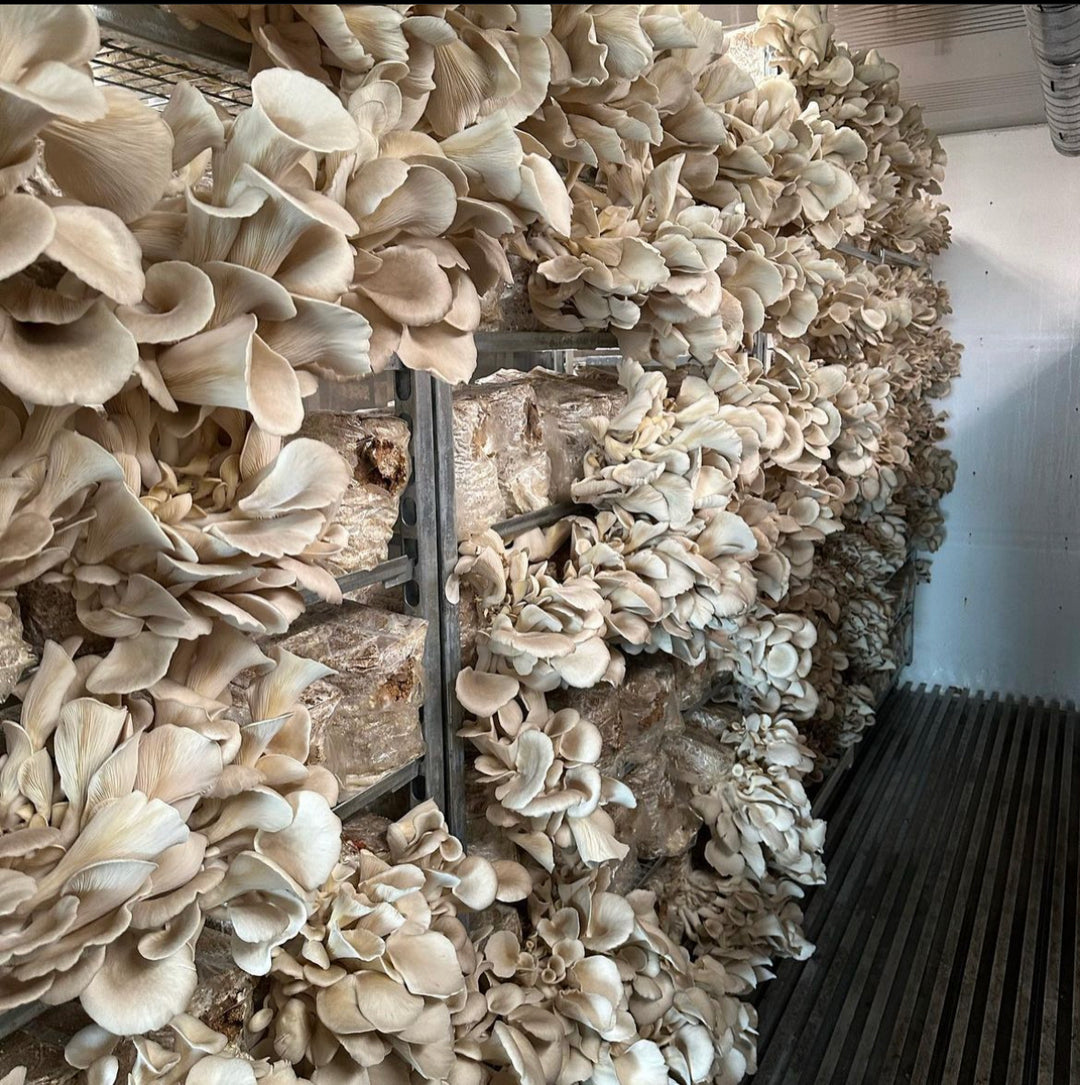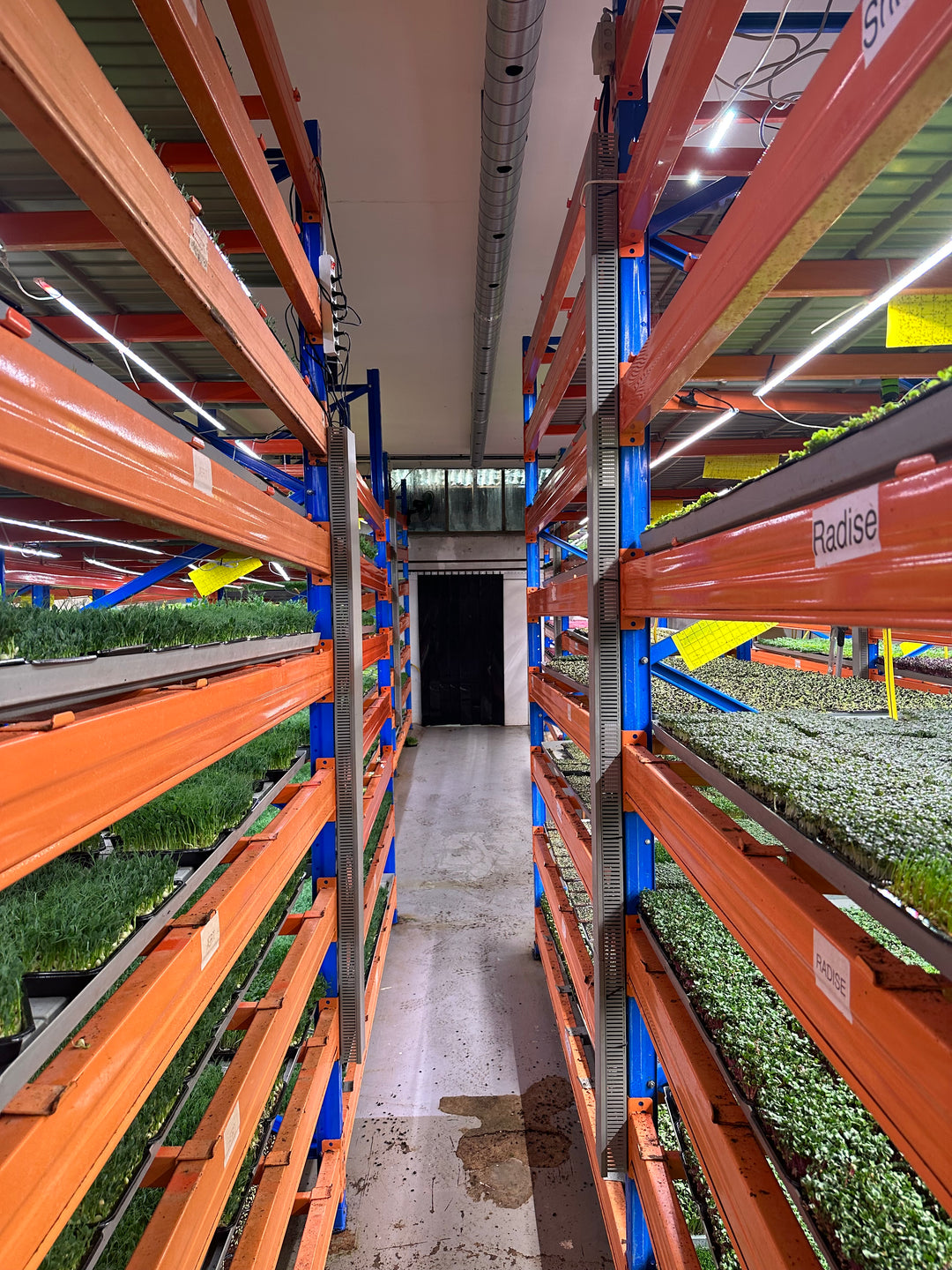Indoor NFT Hydroponics: A Sustainable Way to Grow Fresh Food

Hydroponics is revolutionizing how we grow food, and one of the most efficient methods is Nutrient Film Technique (NFT). Particularly suitable for indoor setups, NFT hydroponics
offers a space-efficient, water-conserving, and fast-growing method to cultivate fresh
vegetables and herbs at home. Whether you´re a beginner or looking to optimize your
growing system, NFT is a fantastic option to consider.
What Is NFT Hydroponics?
The Nutrient Film Technique (NFT) is a type of hydroponic growing system where a thin film of nutrient-rich water flows continuously over the plant roots, allowing them to absorb nutrients while oxygen is also delivered to the roots. The system is ideal for fast-growing, shallow-rooted plants and is typically used in indoor environments.
Why Choose NFT Hydroponics?
1. Space-Efficient: NFT systems use channels or tubes that can be stacked vertically or
placed on shelves, making it a great choice for small spaces.
2. Water-Efficient: NFT uses minimal water by constantly circulating a thin film of water
through the system, reducing waste and maximizing efficiency.
3. Faster Growth: Since the roots are constantly exposed to nutrient-rich water, plants
grow faster than in soil-based systems, offering quicker harvests.
4. Low Maintenance: NFT systems are relatively low-maintenance once set up, with
water being recirculated and the nutrient solution only needing to be replenished
periodically.
5. Highly Scalable: You can start small and scale your system up by adding more
channels or stacking multiple NFT setups.
How NFT Hydroponics Works
1. Channels: Plants are placed in small holes in long, slanted channels or tubes. These
channels are typically made of PVC, and the angle helps the water flow down the
length of the channel.
2. Water Flow: A small pump circulates the nutrient solution (water mixed with
hydroponic nutrients) through the channels, where it flows over the plant roots in a
thin film. The water then returns to a reservoir, where it is recirculated.
3. Nutrient Delivery: The plant roots are exposed to the thin film of nutrient solution,
providing them with all the necessary nutrients. The constant flow of water also
ensures that the roots get plenty of oxygen.
4. Lighting: Since NFT systems are often used indoors, grow lights (such as full-spectrum
LED lights) are used to provide the necessary light for photosynthesis. The light
should be placed at an appropriate distance from the plants to prevent overheating.
5. Monitoring: Regular monitoring is required to check water levels, pH, and nutrient
concentration. NFT systems need to be kept clean to avoid blockages and algae
growth in the channels.
Best Crops for NFT Hydroponics
NFT hydroponics is best suited for leafy greens and herbs with shallow root systems. Here
are some popular crops:
Lettuce (Romaine, Butterhead, etc.)
Spinach
Kale
Arugula
Swiss chard
Basil
Cilantro
Mint
Tips for Success
Regularly clean the system to prevent algae and salt buildup, which can clog the
channels.
Check the pH: The ideal pH range for NFT hydroponics is between 5.5 and 6.5.
Maintain water flow: Ensure the pump is working properly and water flows evenly
over the plant roots.
Use high-quality nutrients designed specifically for hydroponics to ensure your
plants receive the necessary elements for growth.
Monitor plant growth: If plants appear to be too tall or leaning, consider adjusting
the light or water flow to promote healthy growth.
Final Thoughts
NFT hydroponics offers an excellent solution for those who want to grow food indoors in an efficient, space-saving way. It’s perfect for those who want to grow leafy greens, herbs, or small vegetables and enjoy a continuous harvest. While it does require some initial setup and maintenance, the rewards of growing your own food indoors are well worth it—fresh, nutritious, and pesticide-free produce all year round.


